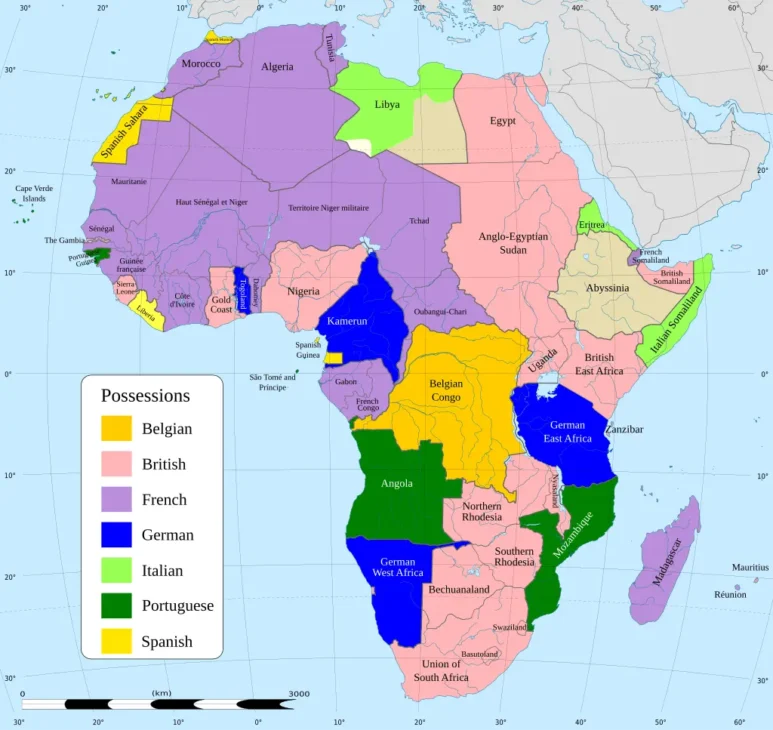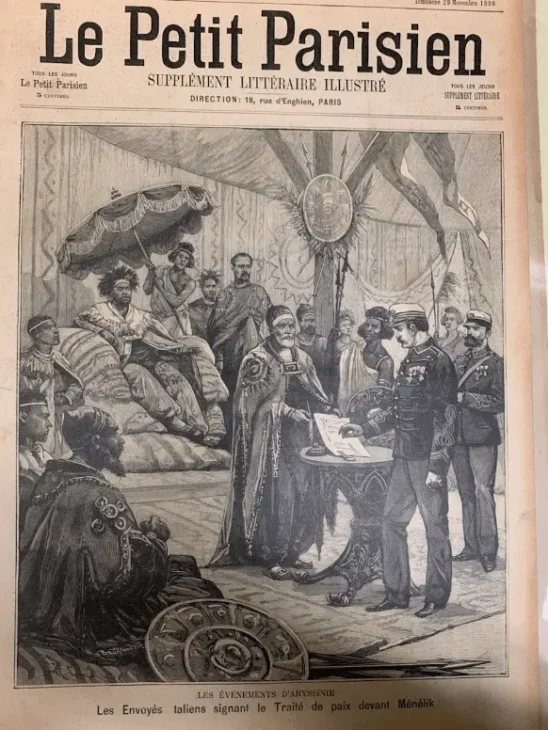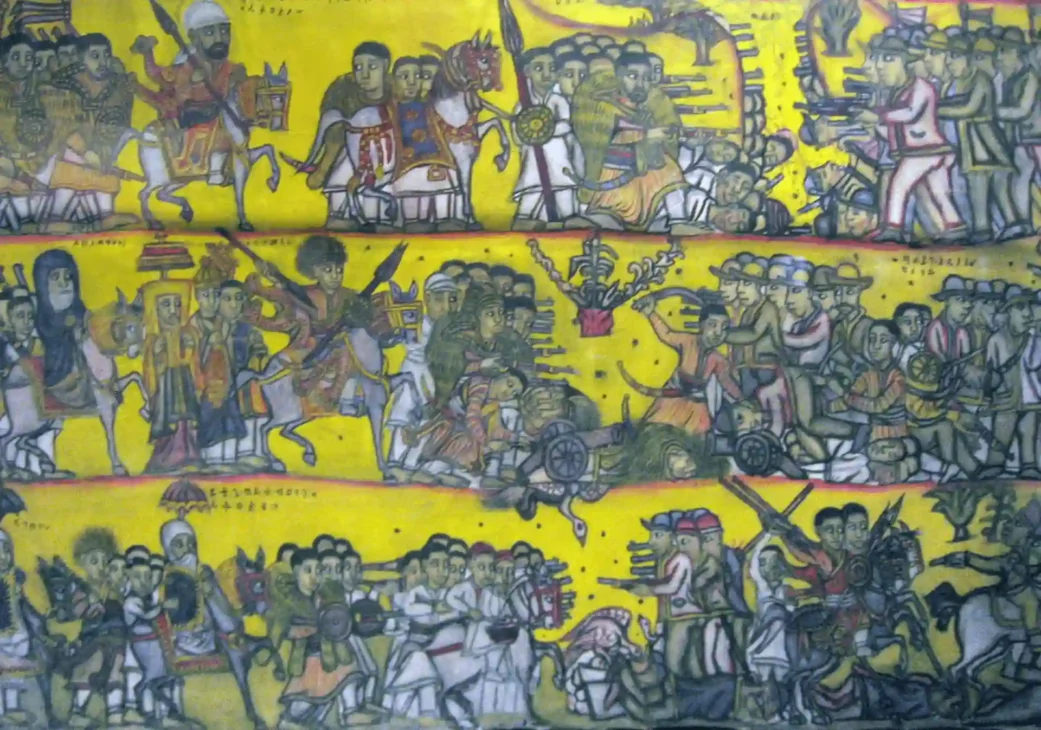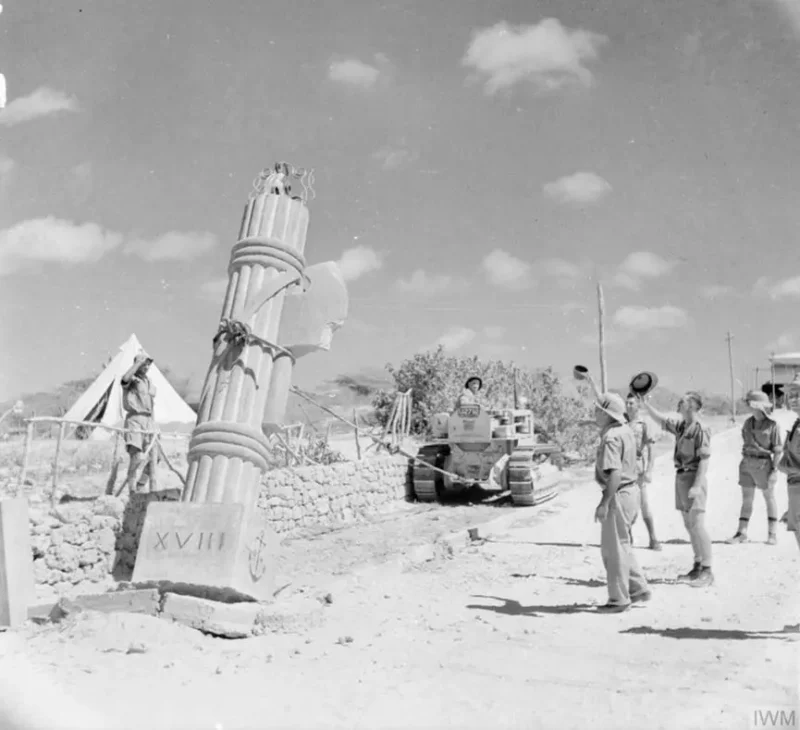Why Ethiopia Was Never Colonized: A Timeline of Resistance

Ethiopia is one of only two African countries that some historians consider never to have been colonized, and that’s no accident.[1] In the age of the Scramble for Africa, it stood its ground when much of the continent fell under European rule.
In this article, we’ll trace Ethiopia’s historical timeline and see how this country navigated imperial threats, avoided the traps of colonization, and wrote itself into world history as a symbol of resistance.
But before that, we have to go as far back as the 4th century AD, when Ethiopia was still known as the Kingdom of Aksum.
Christian Roots of Ancient Ethiopia (4th Century AD)
Okay, bear with me, this bit is the backstory of the backstory.
Remember how Christianity was largely spread due to colonialism? Well, Ethiopia’s case is different. Its Christian roots date as far back as the 4th century AD, when King Ezana of the Kingdom of Aksum first adopted the faith, as a result of the influence of Rome’s Byzantine Empire.

Aksum then became the first sub-Saharan African state to embrace Christianity.[2]
Ancient Ethiopia now had fellow Christian countries such as Portugal, which would come to its aid when colonial threats arose.
One example came in the 1500s, when Emperor Dawit II asked the Portuguese king, John III, for military assistance against Muslim invaders. The latter quickly sent ships and hundreds of soldiers to support his African ally.[3]
It is due to these Christian connections that Ancient Ethiopia stayed uncolonized until the late 1800s.
Diplomatic Maneuvers and the Treaty of Wuchale Dispute (Late 1800s)
Jumping ahead to the late 1800s, during the so-called “Scramble for Africa,” the majority of the continent was under European control. Belgium had Congo. Germany had both East and West Africa. The French held most of Northwestern Africa and Madagascar, while the English controlled portions of the Northeast and South.

Now, Italy—the ever-so-cunning villain of our story—has just secured Eritrea and is looking southward to expand its domain to Ethiopia.[4] In 1889, soon after becoming emperor, Menelik II signed the Treaty of Wuchale with Italy, intended as a pact of friendship and to define the border between Ethiopia and the new Italian colony of Eritrea.[5]

But boy, oh boy, did Italy have other plans.
The Italians created two versions of the treaty—one in Italian and one in Amharic, the official language of Ethiopia—with one key difference on Article 17. In this English translation of the treaty, we can see how huge an impact one word can make.
To quote this translation:
Article 17 of the Amharic version said, “His Majesty the King of Kings of Ethiopia could allow you to make use of the Government of His Majesty the King of Italy for all business dealings he had with other powers or governments.”
Whereas the Italian one goes:
Art. 17.* His Majesty the King of Kings of Ethiopia allows you to make use of the Government of His Majesty the King of Italy for all business dealings he had with other powers or governments.
The treaty Menelik signed in good faith stated that Ethiopia was an independent nation with the right to manage its own foreign policy. Italy’s version, however, portrayed Ethiopia as a protectorate, allowing Italy to make decisions on its behalf in foreign affairs.
Unsurprisingly, this didn’t sit right with Menelik, who saw the whole maneuver as a threat to his country’s sovereignty. He was eventually persuaded by his wife, Empress Taytu, to reject the treaty and declare war against Italy.
This culminated in the famous and decisive Battle of Adwa.[6]
The Battle of Adwa (1896)

In September 1895, Menelik II issued a call to arms across Ethiopia. The response was massive: over 100,000 soldiers gathered from Amhara, Tigray, Oromo, and other ethnic groups.[7] It was a rare moment of unity for a diverse nation once divided by regional loyalties.
Numbers don’t lie: the Italians had only about 15,000 men.[8] On the other hand, Menelik, with his brilliant military strategy, divided his forces into three wings and encircled them, exploiting the colonizers’ tendency to underestimate Ethiopians.
By dawn on March 1, the battle was over.
Ethiopia’s forces had cut off retreat routes and taken control of high ground.
Adwa became the first major defeat of a European power by an African army during the Scramble for Africa. The shockwaves of this momentous event were felt far beyond Ethiopia’s borders.
Aftermath & International Recognition (1896–Early 1900s)
The victory at Adwa led directly to the Treaty of Addis Ababa in October 1896. The treaty voided the Wuchale agreement and forced Italy to formally recognize Ethiopia’s independence.[9] Menelik II emerged as both a military hero and a diplomatic powerhouse.
In the years following, Ethiopia continued modernizing its army and infrastructure. Telegraph lines, roads, and more modern weapons strengthened its position in an increasingly unstable region. The Bank of Absynnia, inaugurated in 1906, became the first modern bank in the country.


This period solidified Emperor Menelik’s and Ethiopia’s legacy as a powerhouse icon of anti-colonial resistance.
Long-Term Legacy of Resistance (World War II to Present)
Of course, imperial powers didn’t leave Ethiopia alone. How could they when the country is rich with natural resources they could exploit?
In 1935, Italian dictator Benito Mussolini invaded the country again as part of his imperial expansion as a future Axis power in World War II, hoping to erase his ancestors’ shameful loss at the Battle of Adwa.
Yep, the whites couldn’t fathom the disgrace of being defeated by Africans; they had to try their luck again.
Regrettably, they won and occupied the country for a couple of years, though not without resistance.
In 1941, the exiled Emperor Selassie returned to the capital, Addis Ababa. With help from the British (Allied Powers), the last Italian troops were defeated in the Battle of Gondar, and two years later, Italy surrendered to the Allies.[10]

Even during Italy’s brief occupation, the spirit of resistance and nationalism of 1896 lived on.
To call Ethiopia’s triumph over colonization a stroke of luck would be a great disservice to the brilliant leadership of King Menelik II and the thousands of Ethiopians who fought valiantly for their nation’s independence. Its history shows that imperial forces can never prevail against the unwavering will of a resilient people.
References:
[1] Countries in Africa Considered Never Colonized
[3] View of Gaining the Heart of Prester John: Loyola’s Blueprint for Ethiopia in Three Key Documents
[4] Eritrea – Coastlands, Conflict, Colonization
[5] King Menelik II: The Architect of Modern Ethiopia
[6] Taytu Betul: The Cunning Empress of Ethiopia
[7] How Ethiopia Beat Back Colonizers in the Battle of Adwa
[8] The battle of Adwa, when Ethiopians defeated Italians
[9] Ethiopia – Imperialism, Menelik, Revolution
[10] How Italy Was Defeated In East Africa In 1941 During WW2


